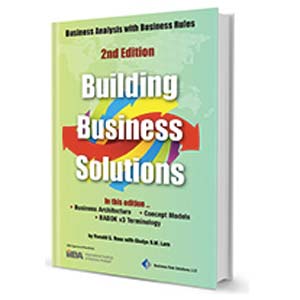Management and Improvement
For nearly two decades I have worked with many organizations in different countries, cultures, and corporate structures to understand and advance the theory and practice of process-based management.
There is a common problem, a change of mindset and practice that many organizations fail to make. Process improvement alone is not enough. Successful process-based management also requires … management.
My goal is always to better understand, and help others understand, how all organizations execute their strategies through cross-functional business processes and, that in traditional management modes, those processes are not actively managed. We get work done in collaboration across the organization, and yet we mainly manage up and down.
More and more people are understanding what this means and, importantly, want to do something about it — they get it. I am encouraged by the increasing number of conversations I have on these topics with senior people in a variety of organizations around the world:
- A regulation authority in the Middle East — they get it.
- A specialty manufacturer in Europe — they get it.
- A fresh food distributor in Asia Pacific — they get it.
- A social services agency in the Arab States — they get it.
- An infrastructure management group in India — they get it.
- A government agency in southern Africa — they get it.
- A national promotion agency in the Arab States — they get it.
They get that in actively managing cross-functional processes, as well as functional organizational units, management becomes less complex and more effective, organizations have more resilience and become more agile, and people are more motivated and engaged as they better understand the role they play in realizing the vision. They get that while process improvement is vital, indeed it's the end game, to make it efficient and effective requires process management.
It's not magic, it's not easy, but neither does it need to be so difficult, costly, or time consuming that it ends up in the too-hard basket. In designing a process-based management approach we need to avoid some common fatal flaws, flaws that are often deliberate design features hiding in plain sight.
The M stands for Management
The M in BPM is for management. That sounds obvious, hardly worth saying, but if you look at many, perhaps most, 'BPM' initiatives they have more to do with ad hoc process improvement, often via some form of technology implementation. Process performance improvement is the end game, and without that we are wasting time. However, to optimize the impact of process improvement we must be choosing the correct processes to improve and then actively manage to maintain the new level of performance.
Organizations need both continuous process management and continuous process improvement. Which processes should be analyzed and improved? Why now? In which order should processes be tackled? What will be the impacts of any change? Should we address processes based on the volume or source of complaints, or is there a better evidence-based approach? Where is the best return on process?
Process-based Management
I have described my view of process-based management in many places, including here, here, and here, so I won't repeat the details. Suffice to say here that the critical elements are that organizations must discover and document their processes, understand how they should perform, know how they are performing, decide what performance gaps are worth closing, and take steps to make the required closures. And repeat, forever. They must do this in the context that most traditional management effort is directed up and down the organization chart rather than across it where value is created, accumulated, and delivered.
Return on Process
There is no immediate, hard, measurable ROI for setting up process-based management. This is foundational work and to argue otherwise will result in loss of credibility. Establishing process-based management takes some time and resources (but less than many think) and creates an active process management environment, a system, that will deliver significant and measurable benefits later. These benefits come from:
- More active management of the high-impact, cross-functional processes (processes that may not be getting much management now).
- Detecting problems before they occur by analyzing and responding to process performance trend data.
- Identifying opportunities for common processes that can lead to shared service delivery mechanisms.
- Improved ability to measure organizational performance in meaningful ways, leading to enhanced management control.
- Making evidence-based decisions about which processes should be improved first, resulting in better prioritization decisions.
- Better understanding and continual assessment of the risk of process failure, and an enhanced ability to implement countermeasures.
- Greater organizational agility derived from a deep knowledge of how work gets done and how strategy is executed.
- Supercharged organizational culture where everyone is aware of how they contribute to the cross-functional processes that deliver customer value.
Many benefits flow from enhanced process management, and the main benefit is much better process improvement.
# # #
About our Contributor:
Online Interactive Training Series
In response to a great many requests, Business Rule Solutions now offers at-a-distance learning options. No travel, no backlogs, no hassles. Same great instructors, but with schedules, content and pricing designed to meet the special needs of busy professionals.











How to Define Business Terms in Plain English: A Primer
How to Use DecisionSpeak™ and Question Charts (Q-Charts™)
Decision Tables - A Primer: How to Use TableSpeak™
Tabulation of Lists in RuleSpeak®: A Primer - Using "The Following" Clause
Business Agility Manifesto
Business Rules Manifesto
Business Motivation Model
Decision Vocabulary
[Download]
[Download]
Semantics of Business Vocabulary and Business Rules